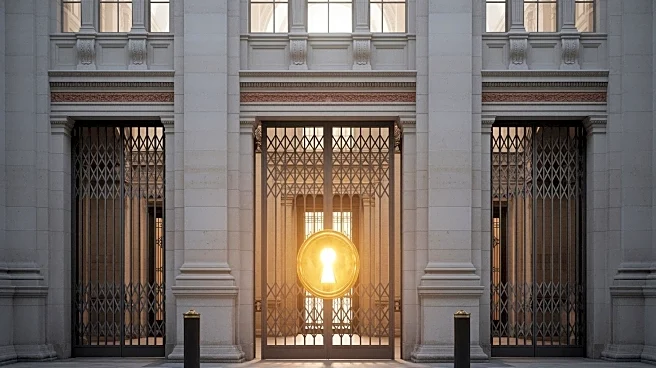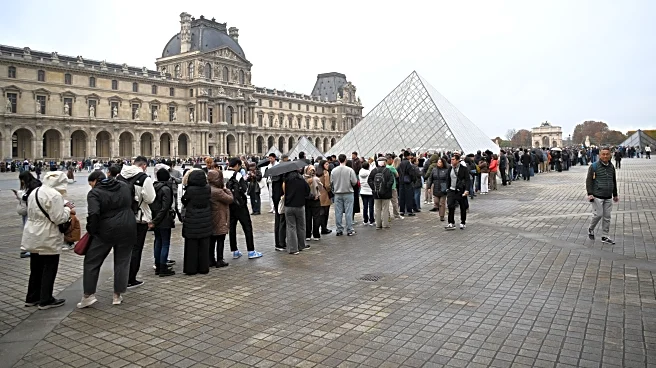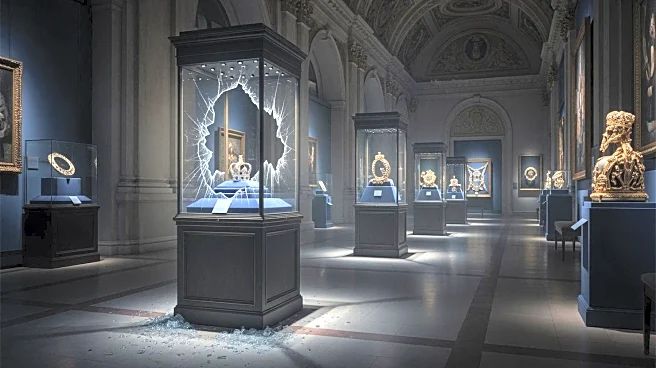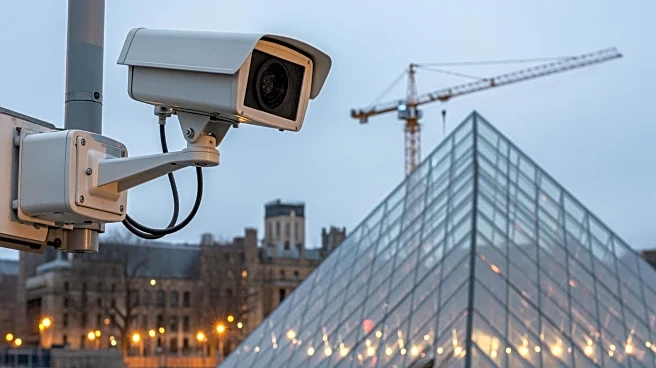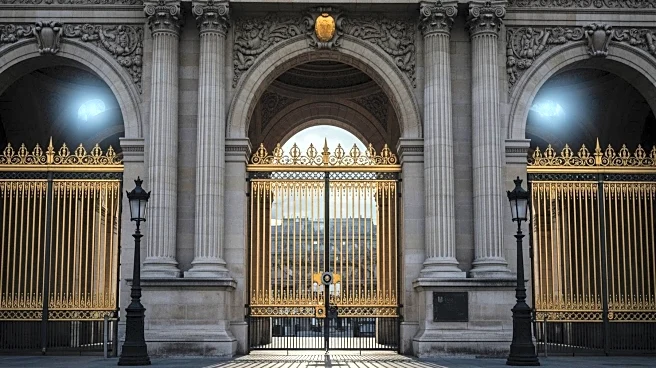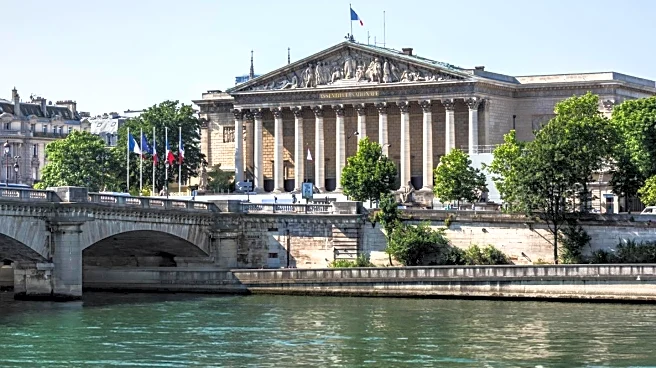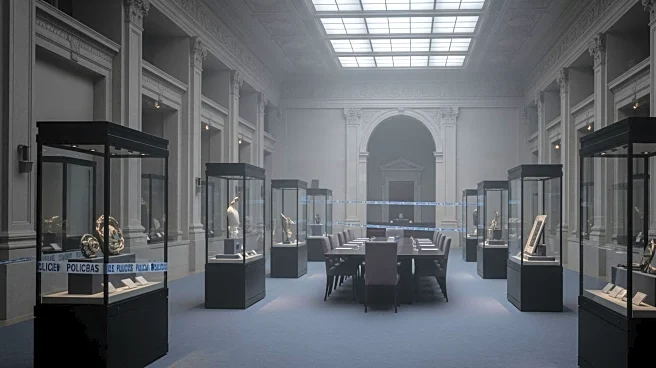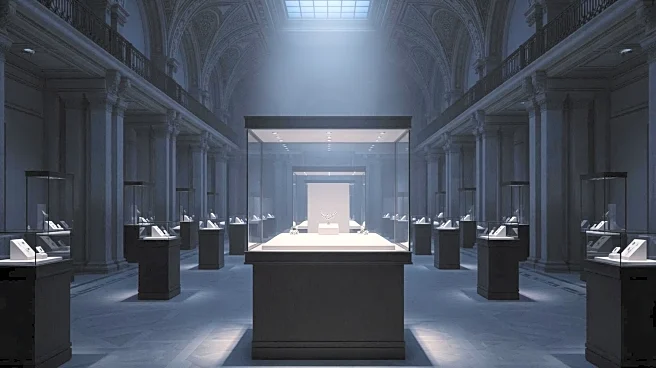What's Happening?
A daring robbery at the Louvre Museum in Paris has raised significant security concerns. On Sunday morning, four thieves posed as workers and used a truck to access the museum's walls. They employed an electric ladder to reach the Apollo Gallery, where
they stole priceless crown jewels. The heist was executed with power tools to break through a window, triggering an alarm that alerted the museum's security command center and the police. The incident has prompted questions about the adequacy of security measures at the Louvre, a historic site known for its extensive exhibition space.
Why It's Important?
The robbery at the Louvre highlights vulnerabilities in security at one of the world's most renowned museums. The theft of priceless jewels not only represents a significant loss but also raises concerns about the protection of cultural heritage. This incident may lead to increased scrutiny of security protocols at museums globally, potentially prompting upgrades and investments in security technology. The event underscores the challenges of safeguarding valuable artifacts while maintaining accessibility for visitors.
What's Next?
In response to the robbery, the Louvre and other museums may review and enhance their security measures to prevent future incidents. This could involve the implementation of advanced surveillance systems, stricter access controls, and increased collaboration with law enforcement agencies. The incident may also lead to discussions on balancing security with visitor experience, ensuring that cultural sites remain open and welcoming while adequately protected.
Beyond the Headlines
The Louvre heist raises ethical questions about the motivations behind art theft and the impact on cultural heritage. It highlights the ongoing battle between preserving history and the allure of illicit gains. The event may also spark debates on the role of museums in safeguarding artifacts and the responsibilities of governments in protecting national treasures.


